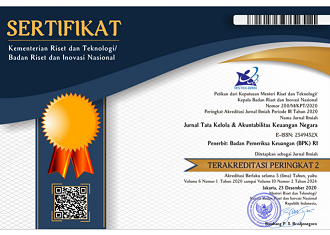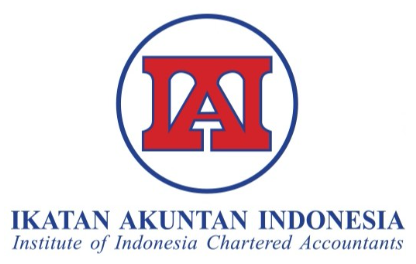PERENCANAAN PEMBANGUNAN DI PAPUA DAN BONUS DEMOGRAFI 2020 (DEVELOPMENT PLANNING IN PAPUA AND DEMOGRAPHIC BONUS 2020)
DOI:
https://doi.org/10.28986/jtaken.v2i1.37Keywords:
Bonus demografi, tingkat kelahiran, ketimpangan, IPM, migrasi, keluarga berencana, Demographic bonus, fertility rateAbstract
Demographic change and rapid modernization that resulted in the displacement and dislocation of indigenous Papuan, has been stimulating their antipathy and demand for independence. Better educated settlers have dominated the growing market-economy and sidelined local people from the benefits of economics and welfare. Large scale flows of migration have also drive a sense of identity being wrenched among Papuans. Together these processes have given rise to a collective perception that Papuans are facing a serious threat to their demographic and cultural survival. On the other hand, it was projected that in the 2020s, a lower fertility rate policy will bring opportunity to Indonesia experiencing a demographic bonus. This essay will focus on Papua Island due to the complexity of its problems in many sectors that arise along with demographic change. Using secondary data of population census 2010, this essay adopts a comparison method to find demographic composition in Papua and analyze the data descriptively. In conclusion, there is inequality in Papua's demographic composition which could challenge the opportunity of demographic bonus 2020. This essay recommends The government revitalize the family planning program which focuses on women's and girls' participation to reach 2.1 fertility rates. The government should also execute policies that aimed to increase access to indigenous Papuans to basic services such as education and health facilities.
Abstrak
Perubahan demografi dan cepatnya modernisasi yang mengakibatkan tergusurnya penduduk asli Papua telah memicu antipati serta tuntutan untuk merdeka. Para pendatang dengan pendidikan yang lebih baik mendominasi pasar ekonomi dan dalam prosesnya menyisihkan penduduk lokal dari keuntungan ekonomi dan kesejahteraan. Perpindahan penduduk dalam skala besar yang disebut program transmigrasi ke Papua juga mendorong timbulnya perasaan identitas yang terenggut diantara penduduk asli. Seluruh proses tersebut membangun persepsi bersama bahwa mereka menghadapi pemusnahan ras, atau paling tidak ancaman serius atas kelangsungan demografi dan budaya mereka. Di sisi lain, diprediksikan bahwa kebijakan penurunan tingkat kelahiran akan membawa kesempatan bagi Indonesia mengalami bonus demografi pada tahun 2020-an. Esai ini akan fokus ke Papua karena kompleksitas masalahnya di berbagai bidang seperti ekonomi, pendidikan serta kesehatan yang timbul seiring perubahan demografi. Memanfaatkan data sekunder dari Sensus Penduduk terakhir pada tahun 2010 yang diolah dengan program Stata, esai ini menggunakan metode komparasi untuk mengetahui perbandingan komposisi demografi di Papua dan menganalisa secara deskriptif sumber-sumber data terkait. Sebagai simpulan, memang terdapat ketimpangan dalam komposisi demografi masyarakat Papua yang dapat menghambat kesempatan menikmati bonus demografi 2020. Esai ini menyarankan agar pemerintah merevitalisasi program keluarga berencana yang fokus kepada partisipasi perempuan untuk mencapai rasio 2,1 kelahiran per perempuan. Pemerintah juga hendaknya membuat kebijakan yang ditujukan untuk meningkatkan akses masyarakat asli Papua ke pelayanan dasar seperti pendidikan dan fasilitas kesehatan.
References
Adioetomo, M. (2005). Bonus demografi: menjelaskan hubungan antara pertumbuhan penduduk dengan pertumbuhan ekonomi. Population Economics Professorial Inaugural Speech, Faculty of Economics, Jakarta: University of Indonesia.
Aghion, P., & Tirole, J. (1997). Formal and real authority in the organization. Journal of Political Economy, 105(1), 1-29.
Amiel, Y., & Cowell, F.A. (1999). Thinking about inequality. Cambridge.
Athreya, K. B., & Romero, J. (2013). Land of opportunity? economic mobility in the United States, Richmond Fed Economic Brief.
Barro, R. J. (2000). Inequality and growth in a panel of countries. Journal of Economic Growth, 5, 5-32.
Basri, M. C. (2012). Indonesia's role in the world economy: sitting on the fence in UA. Reid (ed), Indonesia Rising: The Repositioning of Asia's Third Giant. Singapore: ISEAS Publishing.
Bayuni, E. (2014). Demographic dividend or ticking bomb, Foreign Policy. Diakses 05 November 2014 dari http://transitions. foreignpolicy.com/posts/2012/06/28/demographic_dividend_or_a_ticking_ time_bomb.
Bloom, D. E., Canning, D., & Sevilla, J. (2003). The demographic dividend: a new perspective on the economic consequences of population change. California: RAND.
BPS. (2010). Pertumbuhan dan Persebaran Penduduk Indonesia. Diakses 05 November 2014 dari http://sp2010.bps.go.id/files/ebook/pertumbuhan%20 dan%20persebaran%20penduduk%20 indonesia/index.html
BPS. (2013). Persentase penduduk buta huruf berdasar kelompok umur tahun 2003-2013, BPS. Diakses 25 Maret 2016 dari <http://bps.go.id/tab_sub/view.php?tabel=1daftar=1&id_subyek=28¬ab=2>.
BPS. (2015). Indeks Pembangunan Manusia Metode Baru 2010-2014. Diakses 25 Maret 2016 dari https://www.bps.go.id/ linkTabelStatis/view/id/1796.
Braithwaite, J., dkk. (2010). Anomie and violence: Non-truth and reconciliation in Indonesian peacebuilding. Australia: ANU E Press.
Butt, L. (2002) The smokescreen of culture: AIDS and the Indigenous in Papua, Indonesia. Pacific Health Dialogue, 9 (2), 283-289.
Butt, L. (2005). Lipstick girls and fallen women: AIDS and conspiratorial thinking in Papua, Indonesia. Cultural Anthropology, 20 (3), 412-442.
Caritas. (2006). News from the Field: HIV/AIDS epidemic in West Papua. Diakses 05 November 2014 dari http://www.caritas.org.au/AM/ Template.cfm?Section=Caritas_at_a_ glance&Template/CM/HTMLDisplay. cfm&ContentID=2079.
Chomsky, A. (2007). They Take Our Jobs! And 20 Other Myths About Immigration. Boston: Beacon Press.
Das Gupta, M., Grandvoinnet, H., & Romani, M. (2006). State-community synergies in community-driven development. The Journal of Development Studies. 40 (3), 27-58.
Dinkes Papua Barat. (2011). Data kesehatan di Papua Barat. Diakses 05 November 2014 dari http://papuabarat.bps.go.id/ publikasi/2013/Statistik%20Daerah%20 Provinsi%20Papua%20Barat%202013/ files/assets/basic-html/index.html#39.
Eisenhardt, K. M. (1989). Agency theory: an assessment and review. Academy of Management Review, 14, (1), 57-74.
Elmslie, J. (2010). West Papuan Demographic Transition and the 2010 Indonesian Census: “Slow Motion Genocide†or not?. CPACS Working Paper No. 11/1 September. The University of Sydney. Diakses 25 Maret 2016 dari http://sydney.edu.au/arts/peace_conflict/docs/working_papers/West_Papuan_ Demographics_in_2010_Census.pdf.
Forbes, K. J. (2000). A reassessment of the relationship between inequality and growth. American Economic Review, 90 (4), 869-887.
Freenstra, R. C. (2010). Offshoring in the global economy: microeconomic structure and macroeconomic implications. Cambridge: MIT Press.
Freeport. (2013). Facts about Freeport Indonesia: employment. PT Freeport Indonesia. Diakses dari http://ptfi. co.id/en/media/facts-about-feeportindonesia.
Fritzen, S. A. (2007). Can the design of community-driven development reduce the risk of elite capture? evidence from Indonesia. World Development, 35(8), 1359-75.
Gakidou, E. E., Murray C. J. L., & Frenk, J. (2000). Defining and measuring health inequality: an approach based on the distribution of health expectancy. Bulletin of The World Health Organization, 78 (1), 42-54.
Gini, C. (1921). Measurement of Inequality of Incomes. The Economic Journal, 31 (121), 124-126.
Golding, C., & Katz, L. (2009). The race between education and technology. Harvard: Harvard University Press.
Goujon, A. (2013). Human capital trends in the Pacific rim. in I. Kaur and N. Singh (eds.), The Oxford Handbook of the Economics of the Pacific Rim, New York: Oxford University Press.
Guggenheim, S., Wiranto, T., Prasta, Y., & Wong, S. (2004). Indonesia's kecamatan development program: large-scale use of community development to reduce poverty. World Bank. Diakses 25 Maret 2016 dari http://info.worldbank.org/etools/docs/reducingpoverty/case/88/ full case/Indonesia%20KDP%20Full%20 Case.pdf.
Heckman, J., Lochner, L. J., & Todd, P. E. (2008). Earnings functions and rates of return. National Bureau of Economic Research Working Paper, no. 13780.
Hill, H. (1989). Unity in diversity: regional economic development in Indonesia since 1970, Singapore: OUP.
Indonesia Timur. (2014). Tahun 2014 Papua daerah rawan konflik urutan. Indonesia Timur. Diakses 25 Maret 2016 dari http://indonesiatimur.co/2014/01/05/ tahun-2014-papua-daerah-rawankonflik-urutan-pertama/.
Kapoor, K. (2014). Indonesia to face opportunity, risk as the population grows by a third. Reuters. Diakses 25 Maret 2016 dari http://www.reuters.com/ article/2014/01/30/us-indonesiapopulation-idUSBREA0T0GK20140130.
Kemdiknas. (2015). Indonesia educational statistic in brief 2014/2015. Kemdiknas. Diakses 25 Maret 2016 dari http:// publikasi.data.kemdikbud.go.id/ uploadDir/isi_0BCC909B-1F8E-43E5- BB98-4AE4E0C97BB3_.pdf.
Kemenegpdt. (2014). Transmigration as the first measure to develop villages. Kementerian Desa, Daerah Tertinggal dan Transmigrasi. Diakses 25 Maret 2016 dari http://www.kemenegpdt. go.id/berita/1292/transmigrasi-gardaterdepan-pembangunan-desa.
Kemnakertrans. (2014). Penempatan transmigrasi berdasarkan jenis transmigrasi. Kemnakertrans. Diakses 25 Maret 2016 dari http:// www.depnakertrans.go.id/pusdatin.html.
Kompasiana. (2014). Potensi konflik di Papua. Kompasiana. Diakses 25 Maret 2016 http://m.kompasiana.com/post/ read/686536/1/potensi-konflik-dipapua.html.
Kymlicka, W., & He, B. (2005). Multiculturalism in Asia. New York: Oxford University Press.
Levy, F., & Murnane, R. J. (1992). The US earning levels and earnings inequality: a review of recent trends and proposed explanation. Journal of Economic Literature, 30(3), 1333-1381.
Mankiew, N. G. (2013). Defending the one percent. The Journal of Economic Perspectives, 27(3), 21-34.
Mason, A., & Kinugasa, T. (2008). East Asian economic development: two demographic dividends. Journal of Asian Economics, 19(5), 389-399.
May, J. F. (2012). World population policies: Their origin, evolution, and impact. The Netherlands: Springer.
McDonald, P. (2014). The demography of Indonesia in comparative perspective. Bulletin of Indonesian Economic Studies, 50(1), 29-52.
Mejia, D., & Pierre, M. (2005). Unequal opportunities and human capital formation. CESifo Working Paper no. 1383. Munich: Ifo Center for Economic Studies.
Merdeka. (2014). 47 tahun kuras kekayaan Papua, Freeport tak sejahterakan warga?. Merdeka. Diakses Diakses 25 Maret 2016 dari http://www.merdeka.com/ uang/47-tahun-kuras-kekayaan-papuafreeport-tak-sejahterakan-warga.html.
Mill, J. S. (2009). Considerations on representative government. The Floating Press. Moertopo, A. (1972). Dasar-dasar pemikiran tentang akselerasi modernisasi pembangunan 25 tahun. CSIS, Jakarta.
Moertopo, A. (1974). Strategi politik nasional. Jakarta: CSIS.
Osborne, R. (1985). Indonesia's secret war: the guerilla war in Irian Jaya. Sydney: Allen & Unwin.
Ostry, J. D., & Berg, A. (2011). Inequality and unsustainable growth: two sides of the same coin? The International Monetary Fund, 11(08).
Papuapos. (2013). Jumlah karyawan di Freeport meningkat. Papua Pos. Diakses 25 Maret 2016 dari http://www.papuapos.com/ index.php/warta-daerah/kab-mimika/ item/207-jumlah-karyawan-papua-difreeport-meningkat.
Polling, G. (2014). Jokowi's opportunity to write a new chapter on Papua. CSIS, 5 (18). Diakses 25 Maret 2016 dari http:// csis.org/publication/southeast-asiascott-circle-jokowis-opportunity-writenew-chapter-papua.
Pona, L. (2009). Transmigrasi era otonomi khusus di provinsi Papua. Humaniora, 21, 350-363.
Pradhan, M., David, S. E., & Younger, S. D. (2003). Decomposing world health inequality. Journal of Health Economics, 22, 473-293.
Ross, G., & Manning, C. (1974). Irian Jaya: the transformation of a Melanesian economy. Canberra: Australian National University Press.
Sen, A. (1999). Development as freedom. London: Oxford University Press.
Solon, G. (2004). A model of intergenerational mobility variation over time and place. in M. Corak (ed), Generational Income Mobility in North American and Europe. Cambridge: Cambridge University Press.
Stott, D. A. (2011). Indonesian colonization, resource plunder, and West Papuan grievances. The Asia-Pacific Journal, 9(1).
Suryahadi, A., Raya, U. R., Marbun, D., & Yumna, A. (2012). Accelerating poverty and vulnerability reduction: trends, opportunities, and constraints. SMERU Research Institute. Diakses dari http:// www.smeru.or.id/report/workpaper/ povertyvulnerabilityreduction/ povertyvulnerabilityreduction.pdf.
Tempo. (2011). Papua masih daerah termiskin di Indonesia. Tempo. Diakses 25 Maret 2016 dari http://www.tempo.co/read/ news/2012/08/13/090423266/PapuaMasih-Daerah-Termiskin-di-Indonesia.
UNDP. (2014). Fighting Illiteracy in Indonesia's Papua region. UNDP. Diakses 25 Maret 2016 dari http://www.id.undp.org/ content/indonesia/en/home/ourwork/ povertyreduction/successstories/ fighting-illiteracy-in-indonesias-papuaregion/.
Upton, S. (2009). A historical demographic analysis. University of New South Wales.
Voss, J. (2008). PNPM-Rural baseline report. World Bank. Diakses 25 Maret 2016 dari http://psflibrary.org/catalog/ repository/PNPM_Baseline_Report.pdf.
Weiner, M. (1971). Political demography: an inquiry into the political consequences of population change. In Rapid population growth: consequences and policy implications. Baltimore: The John Hopkins University Press.
Williamson, J. G., & Bloom, D. E. (1998). Demographic transitions and economic miracles in emerging Asia. World Bank Economic Review, 12 (3), 419-455.
Wong, S. (2012). What has been the impact of World bank community-driven development programs? World Bank. Diakses 25 Maret 2016 dari http://wwwwds.worldbank.org/external/default/ WDSContentServer/WDSP/IB/2012/ 06/14/000386194_20120614062031/ Rendered/F/695410WP0SW0CD00Box 370017B00PUBLIC0.pdf.
World Bank. (2012). World development report 2012: gender equality and development. The World Bank. Diakses 25 Maret 2016 dari https://siteresources.worldbank. org/INTWDR2012/rces/7778105- 1299699968583/7786210- 1315936222006/Complete-Report.pdf.
World Bank. (2013). Age dependency ratio, World Bank. Diakses 25 Maret 2016 dari http://data.worldbank. org/indicator/SP.POP.DPND.OL/ countries?display=map.
Downloads
Submitted
Accepted
Published
How to Cite
Issue
Section
License

Jurnal Tata Kelola dan Akuntabilitas Keuangan Negara is licensed under
a Creative Commons Attribution-ShareAlike 4.0 International License




















